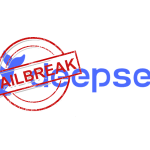In the highly competitive digital landscape, ensuring your website stands out is crucial. One of the most effective ways to enhance your site’s visibility on search engines is by utilizing a sitemap. For WordPress users, creating and managing a sitemap can significantly impact how search engines like Google and Bing crawl and index your site. This guide provides an in-depth look at what WordPress sitemaps are, why they are essential for SEO, and how to generate and optimize them for maximum effectiveness.
Understanding WordPress Sitemaps
A WordPress sitemap is a file, often in XML format, that lists all the URLs of your website’s content—ranging from pages and posts to images and videos. Sitemaps provide a structured map for search engine crawlers, detailing how different pieces of content on your site are interconnected. This file helps search engines understand the organization of your site and discover new content, making it an essential component of a robust SEO strategy.
There are two primary types:
- XML Sitemaps: These are designed primarily for search engines and contain metadata about each URL. Metadata includes information such as when the page was last updated, how often it changes, and its relative importance to other URLs on the site.
- HTML Sitemaps: These are user-facing sitemaps, providing a simple, clickable list of all the pages on a site. While they are not directly aimed at improving SEO, they can enhance user experience by making it easier for visitors to navigate large websites.
The Importance of WordPress Sitemaps for SEO
WordPress Sitemaps play a crucial role in search engine optimization (SEO) by ensuring that search engines can efficiently crawl and index your site. Here’s why they are indispensable:
Enhanced Crawl Efficiency
Search engines have a limited budget for crawling websites, known as the “crawl budget.” A well-structured sitemap helps search engines like Google to prioritize and crawl the most important pages first, ensuring that they spend their budget efficiently on your site’s most valuable content.
Improved Content Discovery
For new websites, or sites that do not have a robust internal linking structure, sitemaps are vital for content discovery. They serve as a guide, helping search engines find all the content on your site, especially pages that are deeply nested or have no inbound links.
Faster Indexing
A dynamic sitemap, which updates every time new content is added or changes are made, can lead to faster indexing. This means your new posts and pages can appear in search engine results more quickly, keeping your content fresh and relevant in the eyes of search engines.
Better Handling of Large Websites
For websites with a vast amount of content, such as e-commerce sites with numerous product pages or news sites with hundreds of articles, a sitemap ensures that all pages are accessible to search engines. This prevents important content from being overlooked and increases the chances of these pages ranking well.
How to Generate a WordPress Sitemap
Generating a sitemap for your WordPress website can be done in several ways, depending on your specific needs and technical proficiency. Here are the most effective methods:
Using WordPress Plugins
Plugins are the most user-friendly way to create a WordPress Sitemap. They offer flexibility and advanced options that go beyond the capabilities of WordPress’s built-in features.
- Yoast SEO: This is one of the most popular SEO plugins for WordPress, offering a wide range of features, including automatic sitemap generation.
- Installation: Install and activate the Yoast SEO plugin from the WordPress plugin repository.
- Configuration: Go to the “SEO” section in your WordPress dashboard. Under “General,” click on the “Features” tab and ensure the “XML Sitemaps” option is enabled.
- Accessing Your Sitemap: Yoast SEO automatically creates a WordPress Sitemap which can be accessed by appending
/sitemap_index.xmlto your website’s URL.
- All in One SEO (AIOSEO): Another comprehensive SEO plugin that includes powerful sitemap generation features.
- Installation: Install and activate the All in One SEO plugin from the WordPress plugin repository.
- Configuration: Navigate to “All in One SEO” in your dashboard, select “Sitemaps,” and enable the “XML Sitemap” feature.
- Customization: The plugin allows for more granular control over which types of content to include or exclude from your WordPress Sitemap, providing a tailored approach to sitemap management.
- Google XML Sitemaps: This plugin is specifically designed for generating XML sitemaps, with less focus on other SEO features.
- Installation: Install and activate the Google XML Sitemaps plugin.
- Settings: Go to “Settings” > “XML-Sitemap” to configure your sitemap settings.
- Customization Options: You can choose to include or exclude specific post types, categories, and archives, and set priorities for different types of content.
Utilizing WordPress’s Built-in Sitemap Feature
WordPress introduced a built-in sitemap feature starting from version 5.5. This feature is basic but can be useful for small websites or beginners.
- Accessing the Built-in Sitemap:
- Simply add
/wp-sitemap.xmlto the end of your website’s URL to view the WordPress Sitemap. - The default WordPress Sitemap includes all public pages, posts, and custom post types.
- Simply add
- Limitations:
- While convenient, the built-in WordPress Sitemap lacks customization options. To exclude specific content or adjust settings like priority and change frequency, you would need to modify your theme’s functions.php file or use a dedicated plugin.
Optimizing Your WordPress Sitemap for Maximum SEO Impact
Creating a sitemap is only the first step. To fully leverage its SEO potential, consider the following best practices:
Keep Your Sitemap Updated
Regular updates are crucial. Whenever you publish new content or make significant changes to existing pages, ensure your sitemap reflects these updates. Most SEO plugins automatically update the sitemap, but it’s good practice to periodically check and confirm.
Submit Your Sitemap to Search Engines
Once your sitemap is ready, submit it to search engines through their webmaster tools. For Google, use Google Search Console:
- Go to the “Sitemaps” section under “Index” in the Search Console.
- Enter the URL of your sitemap and click “Submit.”
For Bing, use Bing Webmaster Tools:
- Navigate to the “Sitemaps” section.
- Add your sitemap URL and submit.
Exclude Low-Value or Duplicate Content
Not all content on your site needs to be indexed. Use your sitemap to exclude pages that do not provide significant value or contain duplicate content. This includes pages like archives, tags, or low-traffic pages that may not contribute positively to your SEO.
Prioritize High-Value Content
Within your sitemap, you can assign priority levels to different pages. This signals to search engines which pages are most important, helping them decide which content to crawl and index first. Focus on prioritizing pages that are most relevant to your site’s goals, such as landing pages, high-performing blog posts, and key service pages.
Utilize the “Last Modified” Tag
The “Last Modified” tag in your XML sitemap indicates the last time a page was updated. This helps search engines identify fresh content, leading to more frequent indexing. Make sure this tag is accurate for all your important pages.
Exclude Low-Value or Duplicate Content
Not all content on your site needs to be indexed. Use your WordPress Sitemap to exclude pages that do not provide significant value or contain duplicate content. This includes pages like archives, tags, or low-traffic pages that may not contribute positively to your SEO.
Prioritize High-Value Content
Within your WordPress Sitemap, you can assign priority levels to different pages. This signals to search engines which pages are most important, helping them decide which content to crawl and index first. Focus on prioritizing pages that are most relevant to your site’s goals, such as landing pages, high-performing blog posts, and key service pages.
Utilize the “Last Modified” Tag in Your WordPress Sitemap
The “Last Modified” tag in your WordPress Sitemap indicates the last time a page was updated. This helps search engines identify fresh content, leading to more frequent indexing. Make sure this tag is accurate for all your important pages.
Common Issues with WordPress Sitemaps and How to Fix Them
Even with the right setup, WordPress Sitemaps can sometimes encounter issues that can affect your site’s SEO performance. Here are some common problems and their solutions:
Sitemap Not Found or Returning Errors
This issue often arises due to incorrect URL settings or plugin conflicts. To resolve:
- Ensure that your WordPress Sitemap URL is correct.
- Check for conflicts between SEO plugins that might both be trying to generate sitemaps.
- Clear your site’s cache and resubmit the WordPress Sitemap to search engines.
Pages Not Appearing in the WordPress Sitemap
If certain pages or posts are missing from your WordPress Sitemap, it could be due to:
- Settings in your SEO plugin that exclude specific post types or categories.
- Pages set to “noindex,” which tells search engines not to include them.
- Incorrect settings in your robots.txt file, blocking certain URLs.
Sitemaps Exceeding Size Limits
XML sitemaps have a size limit of 50,000 URLs or 50MB (uncompressed). If your WordPress Sitemap exceeds these limits:
- Split the sitemap into smaller, more manageable files.
- Use a plugin like Yoast SEO or AIOSEO, which automatically splits large sitemaps.
Conclusion
A well-optimized WordPress Sitemap is an essential tool for improving your site’s SEO and ensuring comprehensive indexing by search engines. By understanding the importance of WordPress Sitemaps, learning how to create and manage them effectively, and following best practices, you can significantly enhance your website’s visibility and performance in search engine results. Whether you are a novice or an experienced webmaster, taking the time to optimize your WordPress Sitemap is a step toward achieving better SEO outcomes.
To maximize your website’s SEO potential, ensure your WordPress Sitemap is up-to-date and fully optimized. For more expert advice on WordPress SEO, subscribe to our newsletter and stay ahead of the curve with our latest tips and guides.







